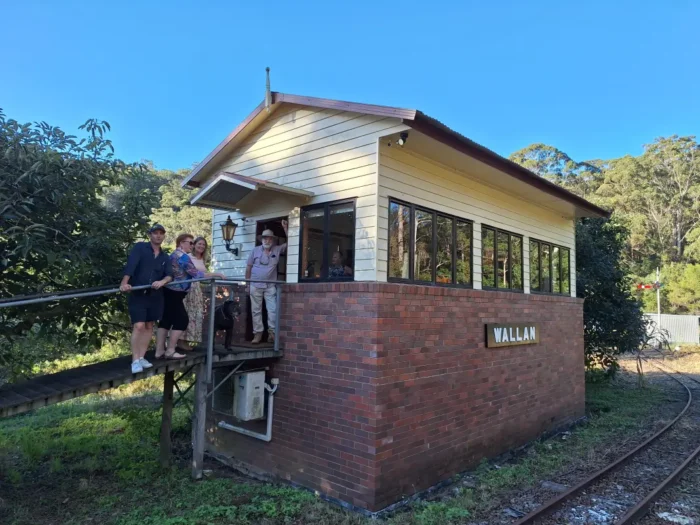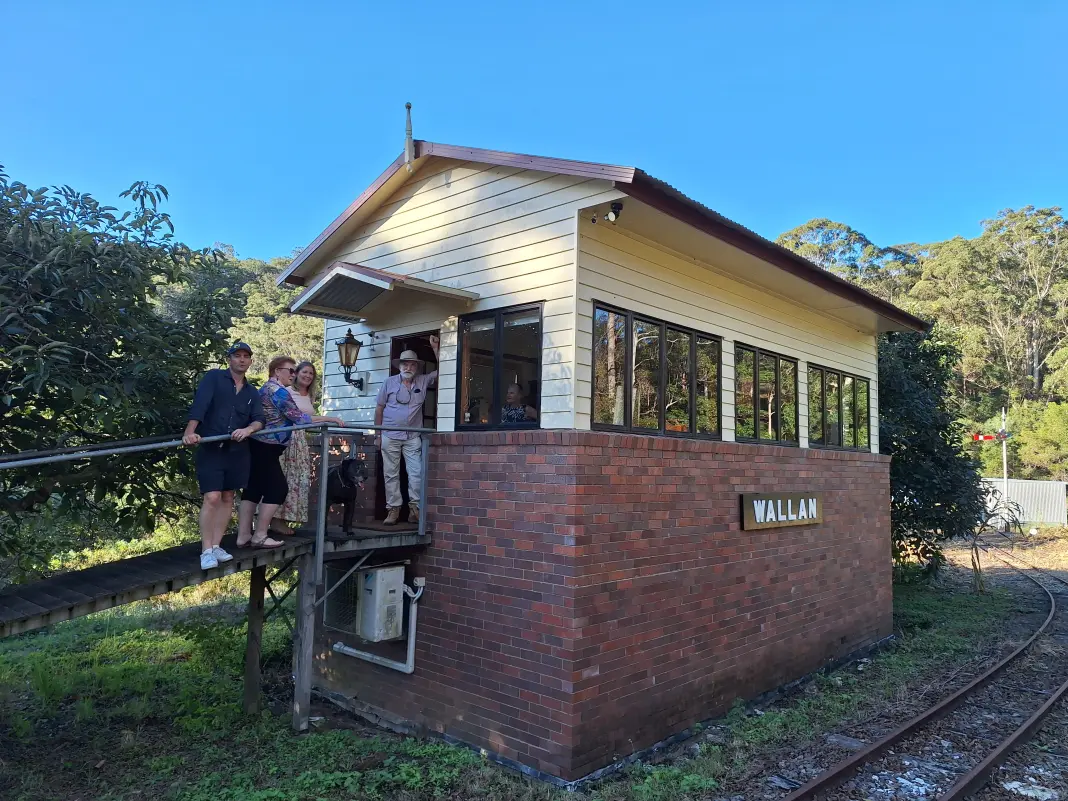BY the time the last signalman closed the door on Wallan’s timber signal box, the building had already witnessed decades of railway history. Its levers once commanded a busy junction where the standard gauge mainline from Sydney met the broad-gauge route to Melbourne, directing trains through passing lanes and into sidings with clockwork precision.
In those days, the signal box was the nerve centre of Wallan’s rail traffic. The signalman’s job was a ballet of timing and muscle, pulling heavy steel levers in sequence, eyes darting between the track diagram on the wall and the rumbling trains outside. Freight and passenger services alike depended on the accuracy of those movements.
When the Victorian Railways decided the old box had reached the end of its working life, its fate could easily have been the scrapyard. Instead, in 1995, it found an unlikely rescue team in Russell and Gai Savage, a couple of Queensland train enthusiasts with a property in the forested hinterland behind Noosa.

The Savages dismantled the building and transported it north, where it spent four years in careful restoration before being reassembled in 2001. Today, the signal box is more than a museum piece, it’s an active part of the Savages’ own narrow-gauge railway, controlling the points and sidings much as it did on the busy mainline.
The couple’s railway, built with the help of Russell’s two brothers in the 1980s, is a feat of persistence. The narrow-gauge track, similar to those used by Queensland cane trains, threads its way through steep rainforest and up to a scenic lookout. It took more than two decades to complete, and maintaining it is an ongoing labour of love, replacing sleepers, checking rails, and keeping the line safe for the two-tonne locomotive that calls it home.
That locomotive, powered by a classic Holden Red Motor, is no toy. With a parking brake, hand throttles, manual braking, and forward/reverse controls, it’s every bit a working train, albeit on a smaller scale.
Beyond the engineering, the property is a haven for wildlife, from pythons basking near the track to goannas lumbering across the forest floor. It borders a national park, with the Savages’ land forming a seamless continuation of the bushland.
For Russell and Gai, the railway and the signal box are more than relics of the past – they are living, working reminders of Australia’s rail heritage. In the Wallan Signal Box’s levers, timber, and glass panes, the story of Wallan’s old railway history still clicks into place, one pull at a time.


